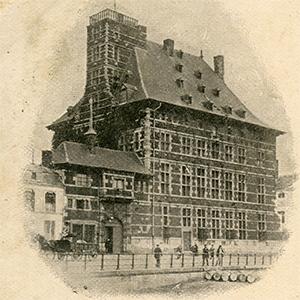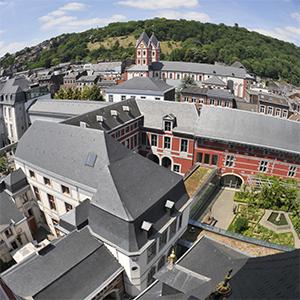History of the museum

Opened to the public in March 2009, after several years of work, the Grand Curtius, which is located in the historic heart of Liège and on the banks of the Meuse river, is one of the major hubs for museums in Liège. This museum site – which was built around a Mosan Renaissance building, constructed at the end of the 16th century or the beginning of the 17th century for Jean de Corte, known as Curtius, a rich arms and gunpowder dealer – has a total surface area of more than 5000 m² and houses exceptional collections of art and history. The Curtius Palace, which was built with red bricks, Meuse stones and mascarons and is a listed building in Wallonia's exceptional heritage, wears its colours beautifully.
The buildings

The Curtius Palace, which gave the museum its name, is the most emblematic building on the site. It owes its name to one of the richest people in the city, Jean de Corte (1551–1628), who Latinised his name to Jean Curtius. At the time, the building was part of a very important architectural complex that included, besides the "palace", which served as a guest house and store, the family’s residence, located in Féronstrée, as well as numerous common ones where one could find housing for the servants, stables, a gallery and a garden, the splendour and opulence of which were already well-known in the 17th century.